Posted: June 28th, 2013 | No Comments »
The Chinese language edition of Midnight in Peking is now in the shops and online in China for the stunningly low price of just RMB35 (actually priced at the high end of the China book market!). My translator was a very cool guy who really diligently worked to try and keep the style and sense of place. It’s going to be interesting to see what Chinese readers think…and below the details for my Chinese readers from Beijing Youth…
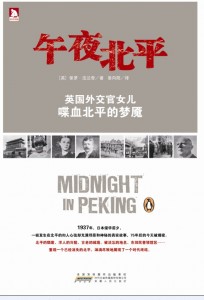
英国历å²å¦å®¶è¿˜åŽŸè€åŒ—平悬疑罪案Â
è£èŽ·2013“爱伦•å¡å¥–最佳犯罪实录奖â€
这一切居然是真的!
Â
“帕梅拉•沃纳的尸体现在就躺在北京的二环路下,那里曾ç»æ˜¯è‹±å›½å…¬å¢“。在过去的70多年里,她就一如她生å‰ä¸€æ ·â€”—å¤å•åœ°å¾…在那里。
ç‹ç‹¸å¡”至今ä»ä¿¯çž°ç€ç›”甲厂胡åŒï¼Œä¿¯çž°ç€æ›¾ç»ä¸€åº¦æ··æ‚ä¸å ªçš„北平黑市。它俯瞰ç€éž‘é¼åŸŽå¢™ï¼Œä¿¯çž°ç€1937年那个寒冷的早上帕梅拉尸体被å‘现的地方。现在,åªæœ‰ä¸Šäº†å¹´çºªçš„è€åŒ—京还记得ç‹ç‹¸å¡”,而ç‹ç‹¸ç²¾ä¹Ÿåªä¼šå‡ºçŽ°åœ¨è€äººå®¶çš„故事里。还有è°è®°å¾—有外国姑娘在城墙下被分尸的悲惨命è¿å‘¢ï¼Ÿâ€
Â
《åˆå¤œåŒ—平》(MIDNIGHT IN PEKING)是一本献给帕梅拉的书。
1937å¹´1月,日本全é¢ä¾µåŽå‰å¤•ï¼Œå¹´è½»çš„英ç±å°‘女——英国外交官19å²çš„女儿帕梅拉在北平被谋æ€ï¼Œæ®‹å¿è‡³æžçš„凶æ€çŽ°åœºéœ‡æƒŠäº†æ•´ä¸ªåŒ—平。ä¸è‹±è¦æ–¹éšå³å±•å¼€è°ƒæŸ¥ï¼Œä½†å› éšåŽæˆ˜ä¹±å»¶ç»µå’ŒåŒæ–¹å½“å±€çš„é˜»æŒ ï¼Œæ¡ˆä»¶çš„ä¾¦ç ´ä¸æ–被æ置,最åŽç«Ÿä¸äº†äº†ä¹‹ï¼Œå‡¶æ‰‹é€é¥æ³•å¤–,直到如今。
â€œæˆ‘ç¬¬ä¸€æ¬¡è¯»åˆ°å¸•æ¢…æ‹‰â€¢æ²ƒçº³çš„æ•…äº‹æ˜¯åœ¨ç¾Žå›½è®°è€…åŸƒå¾·åŠ â€¢æ–¯è¯ºçš„ä¼ è®°é‡Œã€‚è¿™ä½è®°è€…的畅销著作《红星照耀ä¸å›½ã€‹åœ¨ä¸Šä¸–纪30年代将毛泽东推å‘了全世界。当时有一æ¡è„šæ³¨è¯´åŸƒå¾·åŠ 的妻å海伦在帕梅拉é到分解的尸体被å‘现åŽå¾ˆæ˜¯ç´§å¼ ã€‚å› ä¸ºä»–ä»¬å®¶ç¦»æ¡ˆå‘地点很近,而且海伦••••••ç¦æ–¯ç‰¹â€¢æ–¯è¯ºä¹Ÿç»å¸¸æ™šä¸Šéª‘车回家。这æ¡è„šæ³¨è¿˜æ到了ç‹ç‹¸ç²¾â€˜æƒ…欲é…惑’的说法,还有帕梅拉的父亲作为英国å‰å¤–交官的身份以åŠæ¡ˆå最åŽä¸€ç›´æœªèƒ½æŸ¥æ˜Žå‡¶æ‰‹çš„结果。â€
75å¹´åŽï¼Œè‹±å›½äººä¿ç½—•法兰奇对这个å¶ç„¶é‚‚é€…çš„æ•…äº‹æ— æ³•å¿˜æ€€ã€‚â€œå¯¹æˆ‘æ¥è¯´ï¼Œæ˜¯åœ¨ä¸€ä¸ªå¯’冷的冬日,在英国图书馆的报纸å˜æ¡£é‡Œæ„å¤–çœ‹åˆ°ä¸€å¼ å¸•æ¢…æ‹‰çš„ç…§ç‰‡æ—¶æ‰ç»ˆäºŽå†³å®šä¸€å®šè¦æŠŠè¿™ä¸ªæ•…事讲出æ¥ã€‚â€
ä¿ç½—•法兰奇出生于伦敦,1986年到å¤æ—¦å¤§å¦å¦ä¹ 一年ä¸æ–‡åŽï¼Œåœ¨ä¸å›½ç”Ÿæ´»äº†äºŒå年。他是ä¸å›½é—®é¢˜åˆ†æžå¸ˆå’Œè¯„论家,著有《镜里看ä¸å›½ï¼šä»Žé¸¦ç‰‡æˆ˜äº‰åˆ°æ¯›æ³½ä¸œæ—¶ä»£çš„é©»åŽå¤–国记者》ã€ã€Šå¡å°”•克劳——神奇的ä¸å›½é€šï¼šä¸€ä½ç¾Žå›½äººåœ¨ä¸Šæµ·çš„生活和冒险》ã€ã€ŠåŒ—韩:å执的åŠå²›çš„现代å²ã€‹ã€Šæ—§ä¸Šæµ·çš„A到Z》。
他开始为之辗转ä¸å¤–,翻阅所有案å·ï¼Œèµ°è®¿æ¡ˆå‘地点和相关人员。“一桩让当时北平ä¸å¤–社区都谣言四起议论纷纷的案å,在这座已ç»è¢«æ—¥å†›åŒ…å›´ã€å²Œå²Œå¯å±çš„城市里投下了巨大的ææ…Œï¼Œå¸•æ¢…æ‹‰æ¡ˆå¯¹æ— æ•°äººæ¥è¯´æ˜¯ä¸ªé¢„兆,预示ç€ä¸€åº§é¢ä¸´ç顶之ç¾çš„城市ä¸å³å°†çˆ†å‘çš„ç‹‚èºã€‚â€æœ€ç»ˆï¼Œä¼´éšç€éª‡äººç½ªæ¡ˆè¢«æ密的,还有一个业已消失的å¤åŸŽã€ä¸€ä¸ªç»ˆç»“的时代——颓废的北平ã€å†·é…·çš„洋人ã€å¤è€çš„城墙ã€è¢«æ·¡å¿˜çš„地åã€ä¸œéƒŠæ°‘巷领馆区……
“从头到尾我都觉得帕梅拉••沃纳ä¸åº”被人忘记,而且ä¸ç®¡å¤šæ™šï¼Œéƒ½ä¸€å®šè¦è¿˜å¥¹ä¸€ä¸ªå…¬å¹³ã€‚â€åœ¨ä¿ç½—•法兰奇看æ¥ï¼Œâ€œè¿™ä¸€åˆ‡å±…然都是真的!â€æ˜¯è¿™ä¸ªæ‚²å‰§æœ€éª‡äººçš„力é‡å’Œæœ€ç»ˆæžçš„æ„义所在。
2013å¹´3月《åˆå¤œåŒ—平》出版。4月,ä¿ç½—â€¢æ³•å…°å¥‡å› ä¸ºå®ƒè¢«ç¾Žå›½ä¾¦æŽ¢ä½œå®¶å会(WMAï¼‰æŽˆäºˆâ€œåŸƒå¾·åŠ â€¢çˆ±ä¼¦â€¢å¡æœ€ä½³çŠ¯ç½ªå®žå½•å¥–â€ã€‚
创立于1946年该奖,系以美国å‰æ€»ç»Ÿæž—肯和著å音ä¹å®¶è§ä¼¯çº³æœ€ä¸ºæ¿€èµçš„世界侦探å°è¯´å¼€å±±é¼»ç¥–åŸƒå¾·åŠ â€¢çˆ±ä¼¦â€¢å¡ï¼ˆEdgar Allen Poe)的åå—命å。自创设以æ¥ï¼Œå¤‡å—推崇。全世界的侦探å°è¯´ä½œå®¶èŽ«ä¸ä»¥èŽ·å¾—æ¤å¥–为è£ã€‚该奖亦被誉“世界侦探å°è¯´é¢†åŸŸçš„奥斯å¡å¥–â€ï¼Œå‡ 乎所有è£èŽ·æœ€ä½³å°è¯´å¥–的作å“,最åŽéƒ½è¢«æˆåŠŸæ”¹ç¼–æˆç”µå½±æˆ–电视剧集,尽享赞誉。
æ®æ‚‰ï¼Œã€Šåˆå¤œåŒ—平》的电视改编æƒå·²è¢«è‹±å›½Kudos Film and Televisionå…¬å¸è´ä¸‹ï¼Œç›¸å…³å‰§é›†å°†äºŽ9月在ä¸å›½å¼€æ‹ã€‚å…¶ä¸å¸•æ¢…拉的父亲,å‰è‹±å›½å¤–交官ã€è‘—å汉å¦å®¶çˆ±å¾·åŽâ€¢æ²ƒçº³ä¸€è§’,已确定将由《哈利•波特》ä¸é‚“ä¸åˆ©å¤šæ ¡é•¿çš„饰演者出演,而其ä¸æœ€ä¸»è¦çš„ä¸å›½äººè§’色,北平公安局东å—分局侦探队韩世清队长,则署æ„香港演员黄秋生。
                     文/本报记者å´è²
Posted: June 27th, 2013 | No Comments »
Tom Ford has several new scents out using China and the Orient as a motif – Fleur de Chine and Shanghai Lily (the prostitute in Shanghai Express, or perhaps a brand of Chinese cervical cap, but who’s caring?), both in the Atelier d’Orient collection.
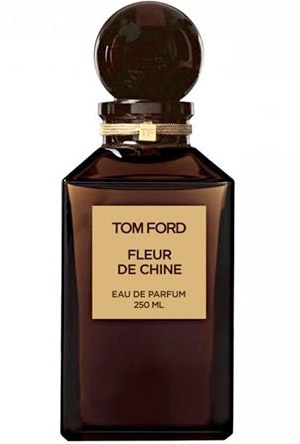
 Fleur de Chine ~ “Dramatic. Smouldering. Seductive. Tom Ford’s Fleur de chine eau de parfum is an unequivocally romantic and haunting floral fragrance touched with a reverence for the great scents of the past. Precious asian flowers, including hualan flower and star magnolia, are arranged in a bouquet of rare beauty for a scent that lingers on.â€
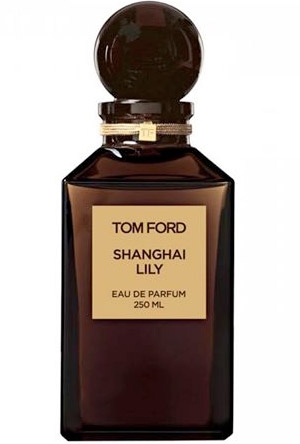
Shanghai Lily ~ “Opulent. Tantalising. Elegant. Tom Ford’s Shanghai Lily eau de parfum is a floral oriental scent that transports the senses into a world of rare and opulent ingredients from the historic silk road. Warm spices, elegant florals and addictive notes of vanilla and frankincense create a hazy reverie of glamour and temptation.â€
And the real Shanghai Lily (we never miss a chance for a Dietrich pic here!)…
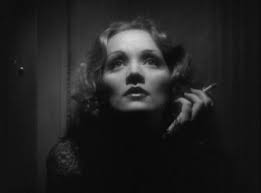
Posted: June 26th, 2013 | No Comments »
Regular readers will know that I like to find strange comparisons in literature where famous writers compare places in China to rather mundane locations elsewhere – there’s a ton them here with links from previously. Here’s a Singapore related one…
To Beg I am Ashamed was supposedly the memoir of a London prostitute by Sheila Cousins published in 1938 (though some say it was ghost written by Graham Greene). Towards the end of the book the central character is whisked of to Malaya by a client and notes of Singapore:
‘For Singapore, when you get to know it, is merely Hendon Central with the sea round’
eerrr, OK….this of course seems a bit silly now, but then in the 1930s perhaps not so much on reflection (climate aside obviously).
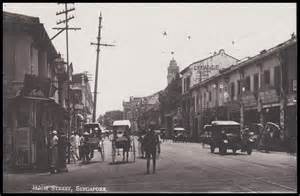 Singapore in the 1930s
Singapore in the 1930s

Hendon – not overly dismilar to a lot of the architecture Singapore had from the British around the that time…
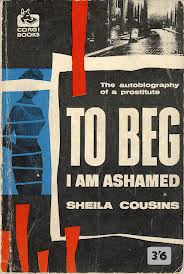
Posted: June 25th, 2013 | No Comments »
My thanks to Bill Lascher, who is currently researching a new biography of the great American China correspondent Melville Jacoby, sadly killed in a plane crash during World War Two. Bill has already published a short piece of Jacoby’s writing from Chungking during the war as an e-book Monsieur Big Hat.
As his research progresses he is turning up lots of fascinating details about Jacoby’s time in China – this from a letter Melville wrote in July 1937 from Peking to his parents which will interest anyone who’s read Midnight in Peking and is familiar with the murder of Pamela Werner…
“Then there was a brutal killing of an English girl a few months back just after an argument. Lots of undercover work up here that doesn’t receive publicity but comes to light now. Some naturally is untrue.”

Posted: June 24th, 2013 | No Comments »
Gao Yunxiang’s Sporting Gender looks extremely interesting….
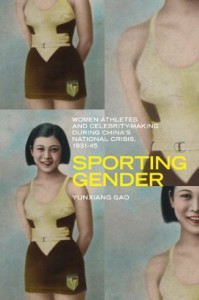
When China hosted the 2008 Summer Olympics — and amazed international observers with both its pageantry and gold-medal count — it made a very public statement about the country’s surge to global power. Yet, China has a much longer history of using sport to communicate a political message.
Sporting Gender is the first book to explore the rise to fame of female athletes in China during its national crisis of 1931-45 brought on by the Japanese invasion. By re-mapping lives and careers of individual female athletes, administrators, and film actors within a wartime context, Gao shows how these women coped with the conflicting demands of nationalist causes, unwanted male attention, and modern fame. While addressing the themes of state control, media influence, fashion, and changes in gender roles, she argues that the athletic female form helped to create a new ideal of modern womanhood in China at time when women’s emancipation and national needs went hand in hand. This book brings vividly to life the histories of these athletes and demonstrates how intertwined they were with the aims of the state and the needs of society.
Yunxiang Gao is an associate professor of East Asian history at Ryerson University.
Posted: June 23rd, 2013 | 1 Comment »
I spent a couple of days in Yichang this week and thought I’d dig out a few reminiscences about the place from the great master Old China Hand, Carl Crow. Crow journeyed up the Yangtze to Sichuan in 1935 partly for a spot of tourism and to see the Three Gorges and partly to see some advertising clients of his up in Sichuan. He decided (though a new aeroplane service was available) to make the voyage by boat….
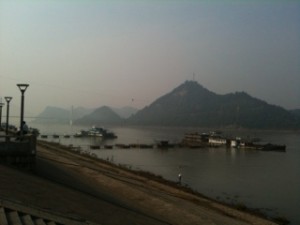
The Yangtse at Yichang this week…
“As usual with Carl what should have been a routine journey to Sichuan turned into a more informative trip than he could have hoped for. In the mid-1930s Sichuan was still considered hopelessly remote. The inland treaty port of Yichang in Hubei, the ‘Gateway of the Gorges’, was a thousand miles from Shanghai while steam navigation went only as far as Chongqing, a further 410 miles upriver from the rapids at Yichang through the famous Three Gorges. Crow travelled by Yangtze River Steamer from Shanghai with Yangtze White Dolphins dipping and diving in the boats wake. The steamer departed in the late afternoon, passing Zhenjiang), a city noted for the quality and the all-pervasive smell of its locally produced vinegar, in Jiangsu, at the junction of the Grand Canal with the Chang River and arrived in Nanjing a day later. Though the new rail service was only an overnight journey Crow considered the standard of hotels in Nanjing so poor he preferred to stay on the steamer. From Nanjing it was a further journey upriver through the commercial centre of Wuhu, the tea-producing town of Kiukiang and Anking with its famous Wind Moving Pagoda for four days before arriving at Hankow and the junction of the Yellow and the Yangtze Rivers. Along with the famous White Dolphins Crow also glimpsed the miniature Yangtze alligators as well as experiencing the famously volatile currents, known as chow chow waters by the ship’s captains, north of Anqing.
Between Shanghai and Hankow the Yangtze was broad and deep and in the summer season when the river was bulging with melting snow waters from Tibet navigable by ocean going vessels. However, above Hankow the Yangtze changed its nature considerably. The so-called middle Yangtze, between Hankow and Yichang, became narrow, crooked, sallow and far harder to navigate meaning that passengers had to transfer to smaller passenger boats for the remainder of the journey which could only be undertaken during daylight hours as by night the river was simply too treacherous.
Hankow to Yichang was a voyage of 400 miles and took longer than the 600 miles from Shanghai to Hankow. At Yichang the middle Yangtze became the upper Yangtze and a further transfer to an even smaller passenger boat was required to proceed and complete the 410 miles to Chongqing. The small vessels that traversed the Yangtze between Yichang and Chongqing were highly powered in proportion to their size to deal with the swift churning currents and rapids. It was still often the case that no amount of engine power was of use and the boat had to be steered through the Gorges, and ominously named spots like the Little Orphan Channel, using towlines pulled by several hundred Sichuan peasants, or Trackers, dragging the boat by walking along narrow paths cut into the cliff face on either side of the torrent below. The upper Yangtze was at that time known as a “graveyard for ships†and, according to Crow, carried the highest maritime insurance rate in the world. As Crow’s ship inched up through the Gorges he could see the funnels of sunken ships dotting the water to remind passengers of just how unforgiving the Yangtze could be.”
From my biography of Crow – A Tough Old China Hand
Posted: June 20th, 2013 | No Comments »
This year’s London Antiquarian Book Fair at Olympia was the usual host of things that are lovely but you can’t afford (or maybe you can…but I can’t!). One particularly lovely China-related item attracted a lot of attention – a programme for the second day of a horse (Mongolian ponies really) racing event at Foochow (Fuzhou) in 1885 courtesy of the dealers Voyager Press Rare Books of Canada (who have lots of lovely Chin and Asia stuff on their website). The event was on Tuesday, December 15th 1885 and you can expect all that all of treaty port society was there – tea traders massing in the stands! Races that day included the “Tea Merchants Cup” and the “Min” Stakes named for the local Chinese dialect of the region and the “Chaasze Cup” named for a famed British tea merchant. To top it all the programme was printed on silk! The sellers were asking GBP650 – not sure if anyone was lucky enough to have 650 quid to part with to let them own this beautiful object of old treaty port China?
You can see the programme here

Foochow around that time
Posted: June 19th, 2013 | No Comments »
Even I am amazed at Dikotter’s rate of output!! This of course looks excellent and would appear to chime with the general ChinaRhyming view of modern Chinese history – The Tragedy of Liberation….

In 1949 Mao Zedong hoisted the red flag over Beijing’s Forbidden City. Instead of liberating the country, the communists destroyed the old order and replaced it with a repressive system that would dominate every aspect of Chinese life. In an epic of revolution and violence which draws on newly opened party archives, interviews and memoirs, Frank Dikötter interweaves the stories of millions of ordinary people with the brutal politics of Mao’s court. A gripping account of how people from all walks of life were caught up in a tragedy that sent at least five million civilians to their deaths.











